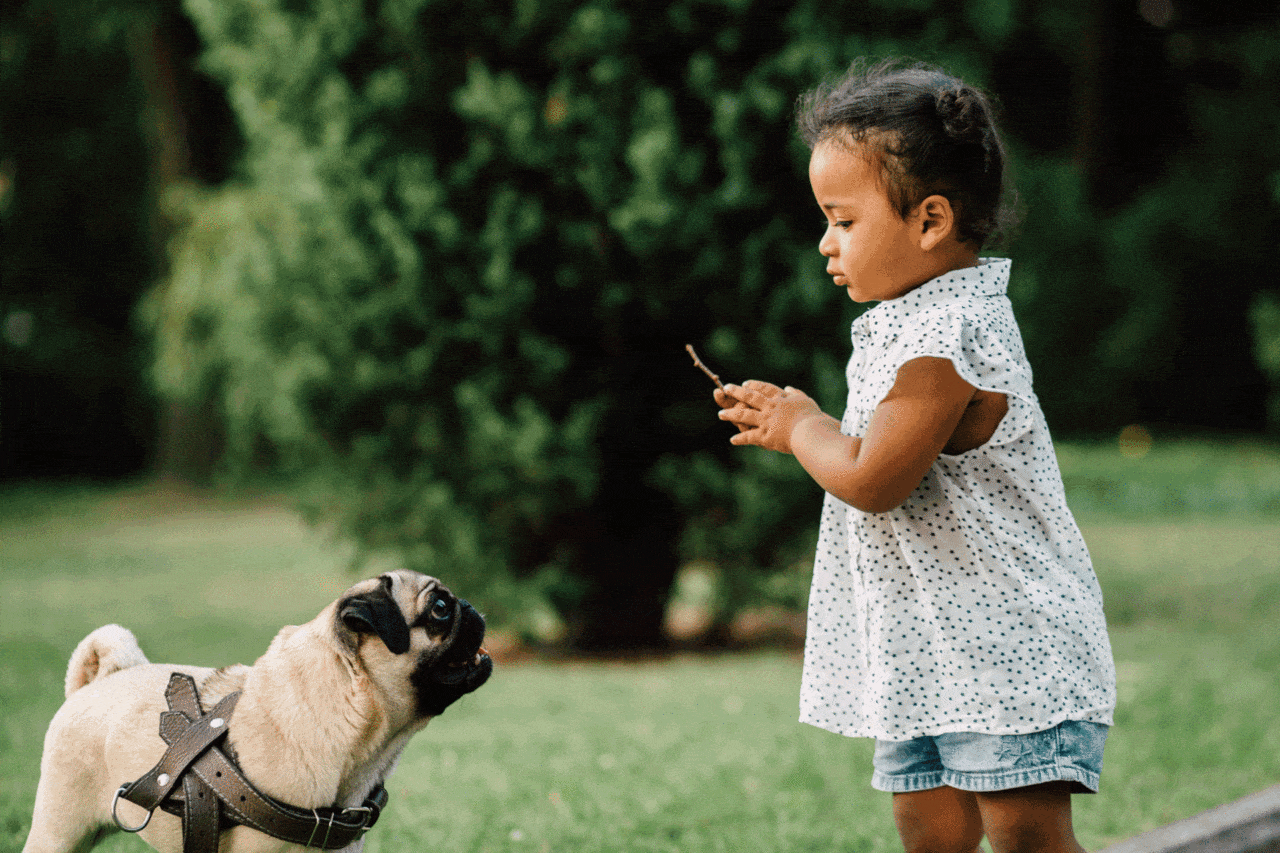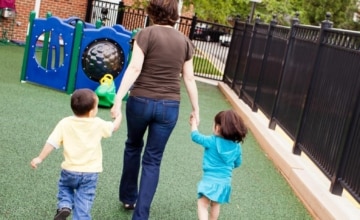Pets can add a lot of fun to family life. If you’re thinking about adopting a dog or cat and have a child under three, there are some important things to think about when bringing a pet home. Here are some tips to make that “welcome home” safer and a little easier.
Before you bring a new pet home26
- Think of shelter staff or rescue volunteers as experts in the animals they are placing. Consider what kind of a pet you are looking for and ask for recommendations. Gentle, friendly, good with kids? Active, playful, and young? Older and more laid back? Staff and volunteers will be able to point you in the right direction.
- Look beyond puppies. Puppies are adorable and fun, and need lots of exercise and attention. Puppies also often go through a “nippy” stage as they are teething, which may not work well with children under three. Older dogs can be calmer and more patient with young children, and are worth a look.
- Make sure that the animal you are adopting meets all your family members. While holding your baby or toddler, give the animal (let’s say a dog) a chance to see/sniff your baby or toddler. How does the dog respond? Do they seem nervous or frightened? Or laid back and go-with-the-flow?
Preparing for bringing your pet home
- Create safe spaces in your home, one for your child and one for your pet. Gate off child-only areas so your baby or toddler can crawl, pull up, run, and play without bothering your pet. And create a place (a crate or bed) that gives your pet somewhere to go when they need a break.
- Plan to supervise your child once your pet arrives. Young children can never be left alone with a new pet.
- Learn about the way that dogs communicate. One of the top reasons a dog is returned to the shelter or rescue is for growling at a child. But growling is how a dog says, “I don’t like what you are doing.” This is why supervision—and stepping in to help your toddler learn your dog’s limits, and your dog to learn appropriate family behavior—is so important. (This chart can give you some quick info about dog body language.)
- Prepare your child for having a pet. Starting with toddlers, share stories about caring for animals. Talk about how to treat animals, like no teasing or pulling tails. Show how to gently touch a pet. Teach your child to avoid touching the pet’s eyes or other sensitive areas (like paws or tails). Use a stuffed animal to help your toddler learn where and how they can pet your dog/cat.
- Remember that toddlers can often recite the “pet rules” (like not pulling the cat’s tail). But their brains aren’t wired for self-control yet, and they may not be able to stop themselves in the moment. To keep everyone safe, make sure your child and pet are never alone together.
Making your pet part of the family
- During feeding time, make sure your child does not touch the pet’s food or water bowl.
- Leashes are for grown-ups only. Even if you have a small dog, it’s a safety risk—to both child and pet—to let toddlers hold the leash.
- Work with a trainer to help your dog understand “good manners” in your home. With a young child, this might mean training a dog not to jump or mouth during play.
- Hugs are just for humans. Most dogs dislike hugs, so teach your toddler other ways to show affection for your pet.
- Keep your child’s toys in a place your pet cannot reach. A favorite stuffed animal looks exactly like a stuffed chew toy. (I’ve been there after a pet has destroyed a child’s favorite cuddly. Bedtime that night is not pretty.) Chewing up a child’s toy is a health risk to your pet, too.
- Make your pet part of everyday routines. Dogs, in particular, often thrive when they are part of a family. Hang out together, enjoy one another, and give lots of love to both baby and fur-baby.
The connection between a child and their pet is a special one they’ll take with them throughout their lives. The right pet, brought into your household at a time that’s right for everyone, can add extra joy and special memories to family life.
*Special thanks to the experts at the Partnership for Animal Welfare for reviewing this resource. PAW is a non-profit group of volunteers that facilitates the rescue and adoption of homeless animals, mainly dogs and cats, and places them in loving and stable homes.





